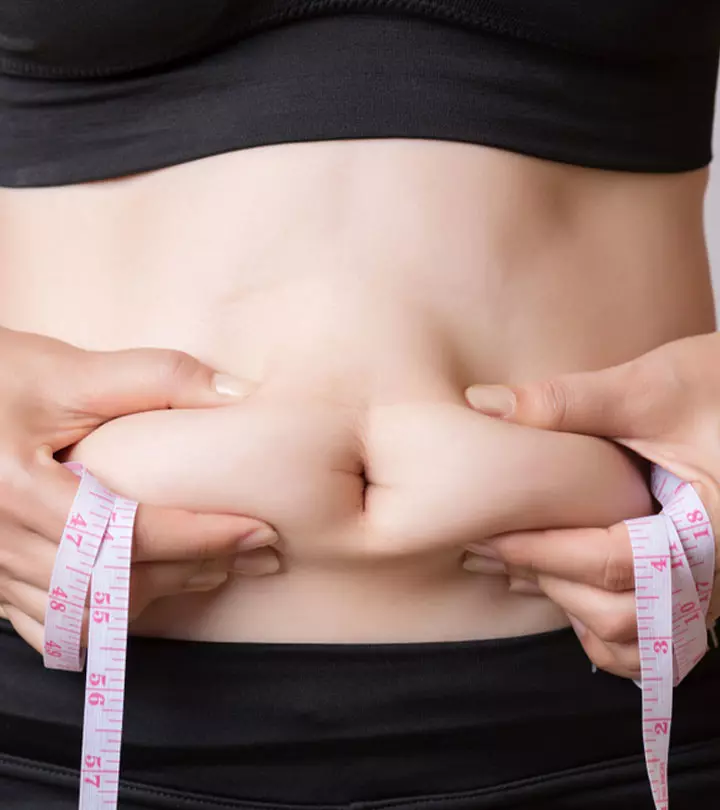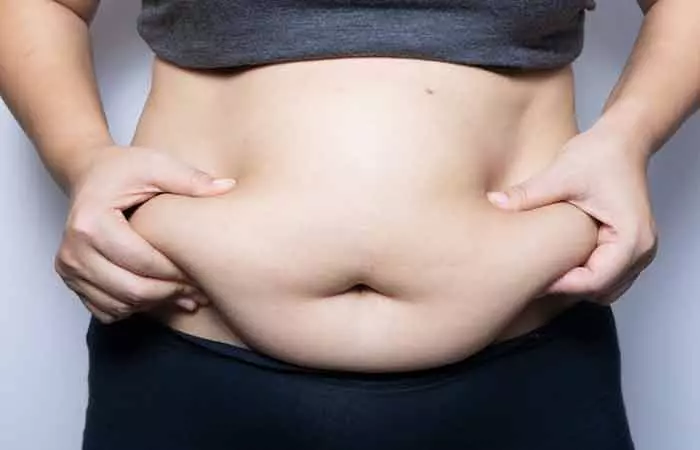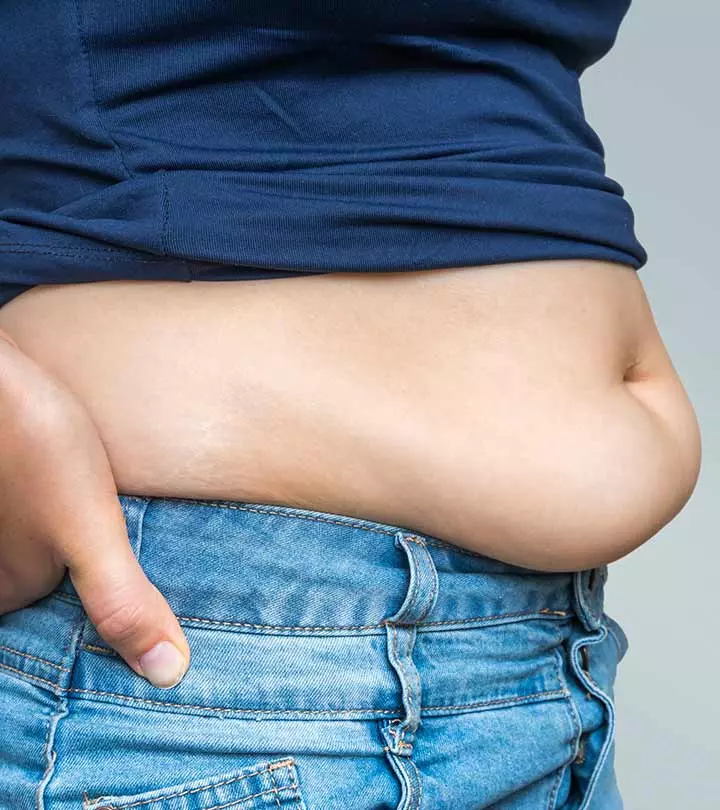What Does Your Body Fat Type Reveal About Your Health?

Image: Shutterstock
The very mention of body fat makes us want to get rid of it. And we don’t blame you! We know how difficult shedding stubborn fat can be. But is fat always bad? No siree! Body fat serves many different purposes that are necessary for our body, and it can also help your body in numerous ways. In this article, we have shared some light on what your body fat reveals about your health. Read on to learn more!
In This Article
1. Subcutaneous Fat
Have you ever pinched the skin around your waist or thighs? That’s subcutaneous fat. It lies just beneath our skin. While it contributes to our body shape and appearance, it also serves a crucial purpose. Subcutaneous fat acts as a protective cushion, shielding our organs and bones from potential injury (1). However, excessive subcutaneous fat can indicate an increased risk of obesity-related health issues, such as cardiovascular disease and diabetes (2).
2. Visceral Fat
Visceral fat wraps around our internal organs. Unlike subcutaneous fat, this fat is less visible but can pose a greater health risk. Excess visceral fat has been linked to an increased risk of heart disease, insulin resistance, and metabolic syndrome. It’s important to keep this fat in check through a balanced diet, regular exercise, and stress management techniques to reduce the risk of associated health problems.
3. Android Fat Distribution
If you find yourself carrying extra weight around your midsection, you may have what’s known as android fat distribution or an apple-shaped body. This fat distribution pattern is more common in men and is associated with a higher risk of cardiovascular disease, diabetes, and hypertension (3). But fear not! Regular exercise, adopting healthy eating habits, and practicing stress management techniques can help combat the android fat distribution and improve your overall health.
4. Gynoid Fat Distribution
Ladies, if you tend to store more fat in your hips, buttocks, and thighs, you have what’s called gynoid fat distribution or a pear-shaped body. While this fat distribution pattern is generally considered less harmful than android fat, it can still indicate an increased risk of metabolic disorders (4). But by maintaining a balanced diet, engaging in regular strength-training exercises, and focusing on overall wellness, you can manage gynoid fat and embrace your beautiful curves.
5. Brown Fat
Now, let’s shed light on brown fat, a type of fat that can actually help us burn calories. Unlike white fat, which stores energy, brown fat generates heat and helps regulate body weight. It’s like having a metabolic superhero within us! Research suggests that increasing brown fat activity may have metabolic benefits and aid in weight management (5). So, how can we activate this fantastic fat? Factors like cold exposure, regular exercise, and adequate sleep can help stimulate brown fat and unlock its potential.
6. White Fat
When we hear the term “fat,” we often think of white fat—the predominant type in our bodies. But white fat is not just an energy storage depot; it also plays a role in hormone regulation (6). It produces hormones like leptin and adiponectin, which affect appetite, metabolism, and inflammation (7). Maintaining a healthy balance of white fat is crucial for overall health. A balanced diet, regular physical activity, stress management, and sufficient sleep can help keep our white fat in check.
7. Lipodystrophy
Sometimes, our bodies exhibit abnormal fat distribution patterns, a condition known as lipodystrophy. This can manifest as localized fat loss or fat accumulation in specific areas. Lipodystrophy can be genetic or acquired and is often associated with metabolic abnormalities and insulin resistance (8). Managing lipodystrophy requires a multidisciplinary approach, including medical supervision, lifestyle modifications, and sometimes medication (9). Remember, your body is unique, and seeking professional guidance is essential for understanding and managing lipodystrophy effectively.
8. High Waist-To-Hip Ratio
The waist-to-hip ratio is an effective measurement to assess body fat distribution. A high ratio indicates excess fat around the waist. It is associated with an increased risk of cardiovascular disease, type 2 diabetes, and other obesity-related conditions (10). Maintaining a healthy waist-to-hip ratio can be achieved through a combination of regular exercise, a balanced diet, weight management, and a focus on overall wellness.
9. Body Fat Percentage
Understanding our body fat percentage is crucial to maintainr overall health. It goes beyond numbers on the scale, focusing on a healthy balance. Regular exercise, proper nutrition, and lifestyle adjustments help us achieve this balance. Let’s prioritize self-acceptance, celebrate small victories, and embrace our unique bodies on this journey to well-being.
Congratulations on embarking on the journey to uncover the secrets of body fat and its impact on your health! By understanding its different types and implications, you can make informed decisions. Embrace a holistic approach—exercise, balanced nutrition, stress management, and quality sleep. Nurture your body for a healthier, happier, and more confident you. Stay healthy and happy!



























